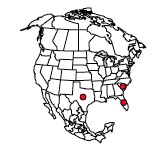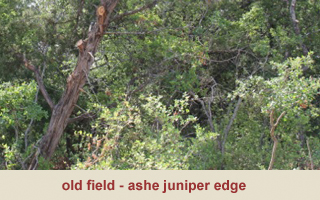Zygoballus sexpunctatus (Hentz, 1845)

Richman, Cutler& Hill 2012
Experienced naturalists rely on a variety of information to make identifications. Along with field marks, knowing what to expect (local species checklist) and when to expect it (seasonality) informs each of their identifications. Descriptions of physical characteristics used for identification normally fall into one of two categories: relative or unique. For example, in the Wikipedia article we learn that Zygoballus nervosus has a wider and heavier cephalothorax when compared to Z. rufipes as well as having shorter and thicker legs than either Z. rufipes or Z. sexpunctatus. Obviously such relative descriptors are most useful to spider watchers with a good deal of experience. However, some species have one or more unique characters, so called “silver bullets,” that by themselves reveal the identity of a given species. Adult males of our present species Z. sexpunctatus have a mark that does not occur on its two congeners – a patch of white scales on the backside of the crown’s peak. See the “Identification” section and video.
The second series of clips shown here are of a salticid found in Hidalgo County, Texas. Although the markings are consistent with Z. sexpunctatus (and yes, clearly show this species “silver bullet”) they are notable for their definition and brightness (in part emphasized by the dark abdominal color) as compared with other Z. sexpunctatus. The south Texas location is also outside the range of previous records for this species. G.B. Edwards and Ryan Kaldari, however, agree that this salticid is Z. sexpunctatus.
G.B. Edwards and R. Kaldari pers comm.
Kaldari, R. Wikipedia – Zygoballus nervosus – Diagnosis




